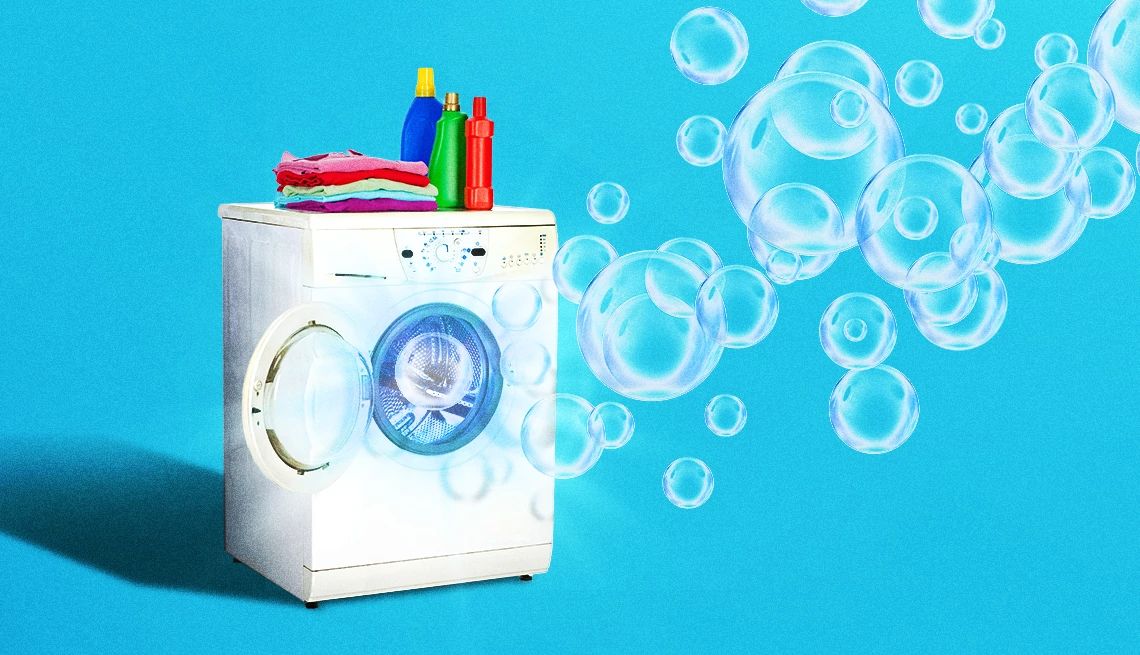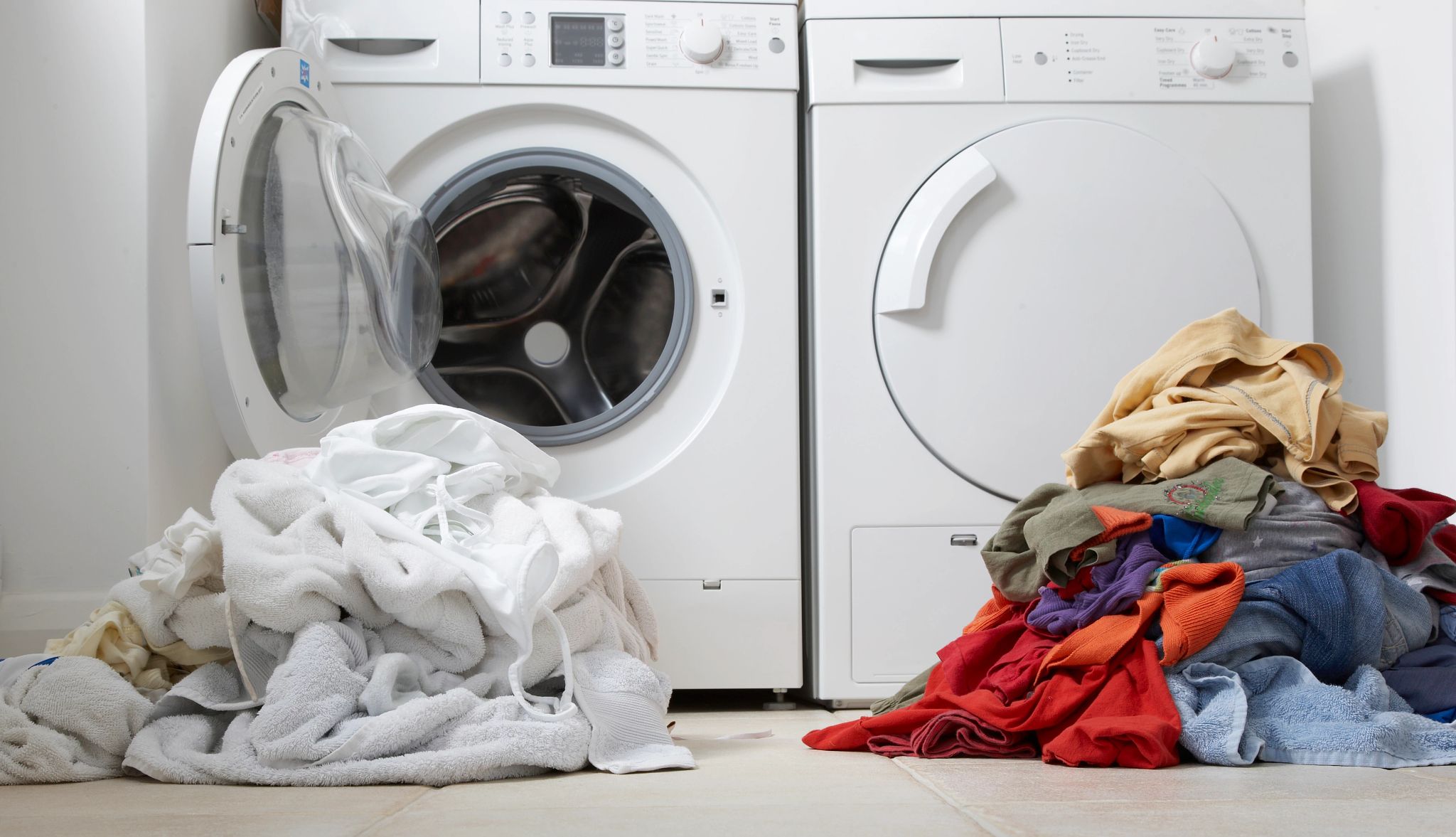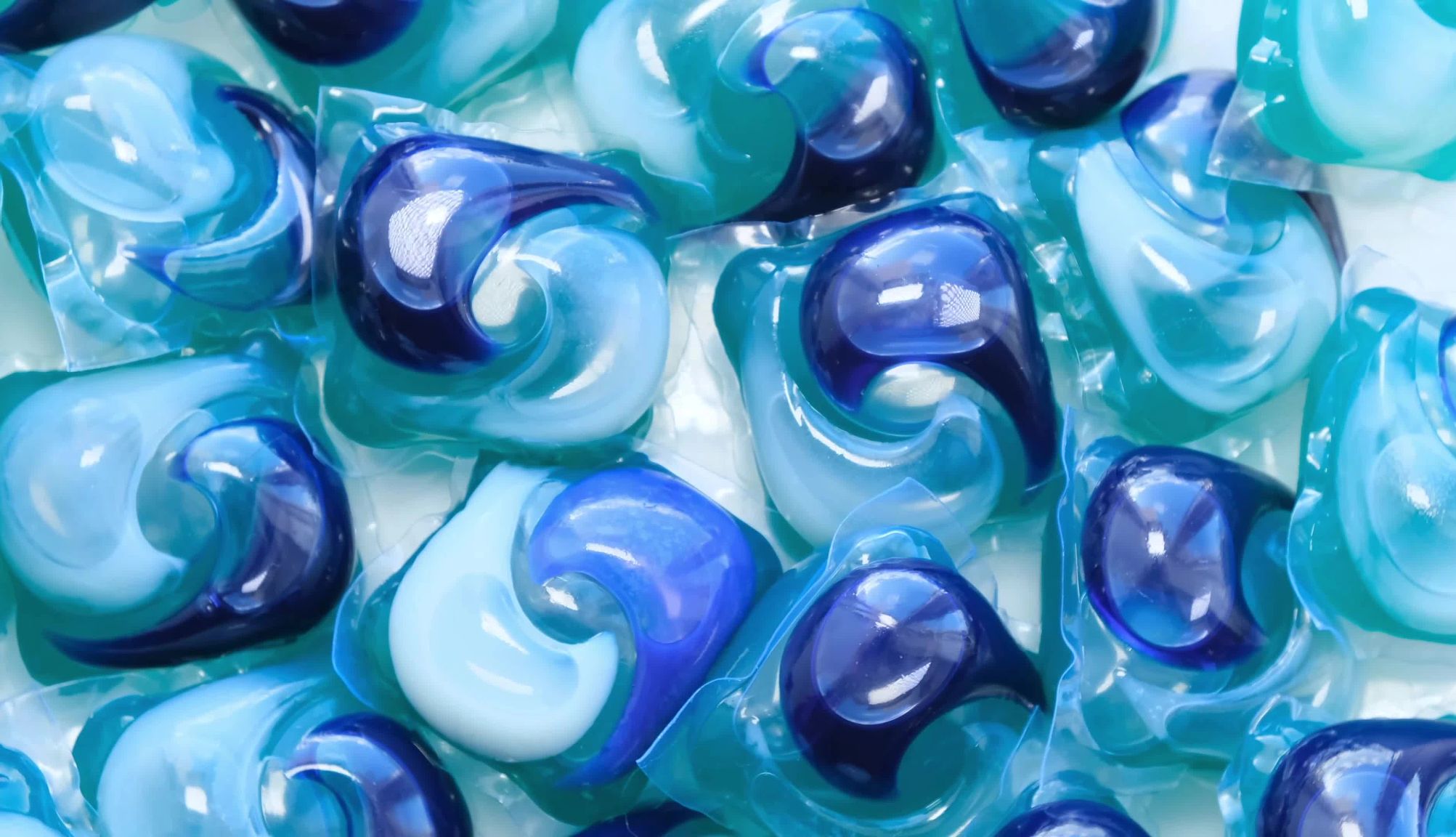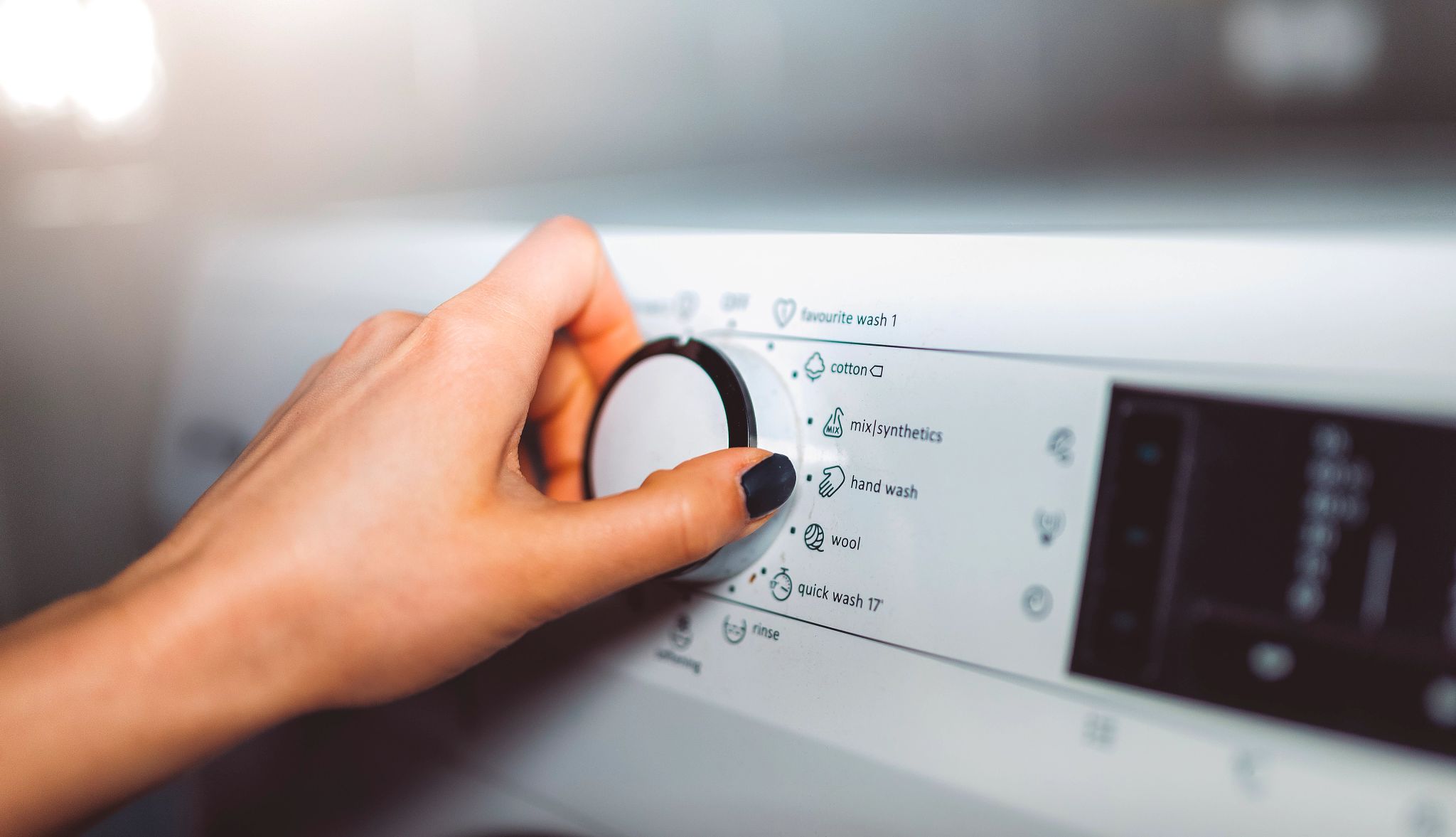AARP Hearing Center


You’ve been doing laundry for decades. The machines are more high tech and some of the products are different — hello, detergent pods — but laundry is laundry. Or is it?
“[Laundry] is completely different,” says Patric Richardson, 52, host of The Laundry Guy on Discovery+ and author of Laundry Love: Finding Joy in a Common Chore. “The technology and fabric is completely different … manufacturers of laundry products had to keep up [because] laundry has changed in a very significant way.”
It’s not just the appliances and products that have changed, though. As you’ve gotten older, your ability to carry heavy baskets of clothing or wrestle the childproof cap off of the detergent may have changed, too — and if you’ve moved from a house with a washer and dryer to an apartment or independent-living facility with communal washers and dryers, laundry can become a real chore.
But there are some big benefits to doing the wash. Clean clothes are important for personal hygiene, odor control and personal appearance, of course, but laundry is also a form of light exercise, and it requires balance and coordination that are important as you age. Here’s some advice on how to spruce up your laundry routine.


GET READY FOR WASH DAY
Sort your clothes
Sorting your laundry before washing it takes extra effort, but it’s worthwhile, according to Richardson. “Sorting is going to make the clothes look better and last longer,” he says. Laundry should be sorted into three separate loads: whites, medium colors, and bright colors and darks. It can also be sorted into more detailed categories, including fabric texture — separating heavier or rough items from delicates to prevent snags, pilling and other damage, adds Kim Romine, fabric care scientist for Procter & Gamble. Romine also suggests sorting heavily soiled clothes into a separate load to avoid making other items dingy. “[It] prevents dirt and grime from transferring and ensures each load gets the appropriate cleaning treatment,” she says.
Set a schedule
Some garments should be washed after every wear, while others can be worn several times before they need to be cleaned. The American Cleaning Institute has a comprehensive list of how often common items should be washed. Generally, socks, underwear and T-shirts should be washed after each wear, while jeans, dress shirts and pajamas can be worn up to three times before washing. “For clothes, it depends on how likely they are to absorb sweat and body oils, which can lead to bacteria growth and odor,” says Jessica Ek, ACI’s associate vice president of strategic communications. “This comes down to the fabric and how close it is worn to the skin.”
Read the labels
Never toss an item in the washing machine or dryer without reading the label. “Reading the care tag instructions and noting the laundry symbols on your clothing is an essential step to ensure that you avoid any damage to your garments,” says Michelle Piombino, principal scientist at Henkel for Purex Laundry. “Care tag labels help you determine the best way to wash your clothes, including the correct temperature, the ideal drying process and more.” Understanding the care labels and laundry symbols on your clothes can help prevent damage and “mishaps” like shrinkage, Piombino adds. Use the symbols to choose a garment’s proper temperature and wash cycle — or to pull it from the hamper and take it to the dry cleaner instead.
Pretreat stains
Whether it’s blood on your favorite jeans or spaghetti sauce on a white T-shirt, don’t wait until laundry day to treat a stain. “When stains set in, they become more difficult to remove,” Romine says. “It’s best if you can wash within a few hours of getting a stain.”
Most high-quality detergents are formulated to remove stains without additional pretreatment, but stubborn stains may require a specialized treatment product, Romine says. To pre-treat a stain, apply a small amount of liquid laundry detergent directly onto the stain, taking care to cover the entire stain with detergent; wait about five minutes to allow the detergent to penetrate the stain and then run your item through your regular laundry cycle. This process, she adds, “should make it significantly easier for the stain to come off through the wash.”
Many of the folk remedies to treat stains using household products like baking soda, vinegar, hydrogen peroxide and lemon juice aren’t that effective and could damage fabrics. Baking soda, for example, has a high PH that can take a toll on wool, cashmere and silk, while the low PH in vinegar could weaken cotton, linen and other fabrics. If in doubt, opt for cold water.
"Cold water is generally effective for treating stains," Romine says. "In the case of specific stains like blood, using warm or hot water can actually set the stain rather than remove it."


DETERGENTS, BLEACHES AND BEYOND
Pick the right detergent
Powders, liquids, pods, flakes. The sheer number of detergent options can feel daunting — but it shouldn’t. “Pick whichever [form of detergent] you want,” Richardson says.
“Just don't use too much of it,” she adds, because that can cause your clothes to look dingy or feel crunchy. In general, Richardson believes that the recommended amount of detergent on the label is too much, adding, “We’ve made it so much more concentrated; we just don’t need as much anymore.”
Ek has a more nuanced approach. “If your clothes tend to get really dirty, a detergent with multiple surfactants and enzymes can offer a lot of stain-fighting power,” she says. “If you have sensitive skin, a ‘free and gentle’ detergent can be a good choice. If you want a detergent with ingredients that are safer for your family and the planet, then a detergent that has an EPA Safer Choice label can be a good pick. Look for a detergent from a brand you trust that features benefits you value.”
There is one caveat: Never use regular detergent in high-efficiency washing machines. HE machines use less water and regular detergent is too sudsy, which could clog the pump, cause the machine to overheat, or increase the risk of mold and mildew. Using HE detergent could prolong the life of your washing machine.
Consider bleach and whitening agents
There are two main types of bleach — chlorine and non-chlorine bleach. Chlorine bleach, which Piombino calls “a great and powerful laundry tool, is ideal for keeping whites looking bright but shouldn't be used on colored clothes. because it can leave bleach spots.
Oxygen bleach, also called color-safe bleach contains sodium percarbonate — an ideal ingredient for washing activewear and other "performance fabrics," as well as items like bras, swimwear and shapewear.
Steer clear of oxygen bleach on silk, wool or other animal-based fabrics because it degrades the fabric. And remember, never mix bleach with other cleaning products, including ammonia, vinegar and hydrogen peroxide. It can cause a chemical reaction that produces dangerous gases.
Learn about other laundry products
If detergent gets the job done, do you need fabric softeners and conditioners, scent boosters, color catchers and laundry sanitizers? It depends.
Romine is a fan of using multiple products in her laundry routine: She uses detergent pods for cleaning, fabric softener to keep fabrics soft, rinse aids for odor removal, scent beads for added freshness and dryer sheets for static control. Mixing and matching laundry products in each load, she says, help to “maximize the laundry process to get all of the benefits…in one wash.”
Laundry products can also be time savers. A wrinkle-release spray, for example, is great for removing wrinkles without hauling out the ironing board. Ek notes that these products can “help make the laundry process easier and help your clothes look and smell their best.”









































































You Might Also Like
10 Unexpected, Low-Effort Recipes for Your Air Fryer
Air fryers are a great appliance for older adults. Here's why, along with fun new recipes to try
Essay: My Dad Lives On, Through the Record Albums He Left Behind
Woman rediscovers dad by posting videos about his collection on Instagram
25 Great Ways to Save on Monthly Bills
Lower your payments without sacrificing your lifestyle